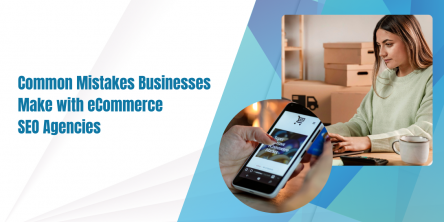From Freemium to Fortune: How SEO Fuels SaaS User Acquisition

In the world of SaaS, “freemium” has become one of the most popular go-to-market strategies. It makes sense — offering users a free, limited version of your product lowers the barrier to entry, gets your tool in the hands of potential customers quickly, and builds trust without friction. But getting people to discover your freemium product in the first place? That’s the hard part.
This is where SEO comes in — and not just as a traffic source, but as a core engine of user acquisition that can transform a freemium model into a scalable, revenue-generating machine.
If you’re a SaaS founder, marketer, or product owner, understanding the relationship between SEO and user acquisition isn’t just helpful — it’s essential. Here’s why.
The Freemium Funnel Is Built on Discoverability
The idea behind freemium is that users can try your product, get value from it, and eventually upgrade to a paid plan when they need more features, seats, or support. It’s product-led growth at its core.
But even the most frictionless product won’t grow if people don’t know it exists.
This is where SEO shines. By ranking for the keywords your audience is already searching — whether that’s a direct problem they’re facing, a feature comparison, or industry-specific use cases — you pull potential users into your ecosystem before they’re even ready to make a purchase. It’s demand generation without the pushiness.
For example, let’s say you offer a freemium time tracking tool for remote teams. Ranking for keywords like:
● “free time tracking tool”
● “How to manage remote team productivity”
● “Toggl vs Clockify”
Brings in users who are in research mode, and that’s exactly when you want them to discover your product.
SEO and Freemium Go Hand in Hand
Here’s why SEO works so well with the freemium model:
1. Low-Commitment Offer, High-Intent Traffic
Users coming from search are often in a problem-solving mindset. They’ve already identified a pain point and are actively looking for solutions. Offering them a free, no-strings-attached product is a natural next step in their journey. It meets them at the right moment — and the right mindset.
This is very different from, say, running cold ads to people who didn’t ask for your product in the first place. SEO traffic, while slower to build, tends to be warmer, more qualified, and more aligned with your value proposition.
2. Evergreen Acquisition
Unlike paid campaigns that stop the moment you pause your budget, SEO compounds over time. A strong blog post or comparison page that ranks well can continue driving signups for months — even years — with little to no ongoing spend.
For SaaS companies that rely on volume (which most freemium models do), that kind of predictable, scalable traffic is a game-changer.
3. It Reduces CAC Over Time
Customer acquisition cost (CAC) is always a hot topic in SaaS, especially for freemium companies where the initial revenue per user is often zero. You’re playing the long game — hoping that enough free users convert over time to make the model viable.
SEO helps make that math work. While there’s an upfront investment in content, link building, and technical optimization, the long-term return tends to be far more efficient than continuously bidding on competitive PPC keywords.
What SEO Tactics Work Best for Freemium SaaS?
Not all SEO strategies are created equal. If your business runs on freemium, you’ll want to lean into the tactics that match the user’s intent and help guide them toward activation.
✅ Product-Led Content
Create content that directly ties into your product’s use cases. If you offer a free project management tool, write articles about organizing remote teams, managing client workflows, or staying productive without meetings. Don’t just write fluff — show readers how your tool helps.
✅ Comparison Pages
These are gold for freemium SaaS. Users love to compare options before signing up. If you’re not creating “[Your Tool] vs [Competitor]” pages, your competitors definitely are — and they’re capturing the traffic you should be getting.
✅ Free Tools and Templates
If you already offer a free product, highlight it everywhere — in blog posts, meta descriptions, social cards, and SERP-friendly landing pages. Templates, checklists, and embedded calculators also perform well and are highly linkable.
✅ User Onboarding SEO
It’s not just about acquisition — it’s about helping users find value quickly. Optimizing your documentation, help center, and onboarding flows for search ensures that new users get the answers they need without bouncing. Happy users = more upgrades.
The Role of Backlinks in Freemium SEO
You can write the best content in the world, but if no one links to it, it won’t rank, especially in competitive SaaS niches. Link building is essential, but it takes time, strategy, and relationships.
That’s where some companies choose to work with specialized SEO agencies. For example, Linkflow helps SaaS businesses drive recurring traffic and signups by combining smart content with powerful backlink strategies, which is exactly what a freemium product needs to succeed long-term.
Whether you handle it in-house or outsource it, don’t ignore link building. It’s not optional — it’s foundational.
From Free Users to Paid Champions
At the end of the day, SEO doesn’t just drive any users — it drives the right users. People who are already searching for a solution, already in research mode, and already primed to try something new.
When paired with a freemium model, SEO becomes more than just a marketing channel. It becomes the bridge between discovery and product experience. And once users get inside the product and start seeing value, that’s where the freemium model starts working its magic — nudging them toward activation, retention, and ultimately, conversion.
Final Thoughts
Freemium is powerful, but only if people can find your product. SEO ensures that happens — consistently, cost-effectively, and at scale.
If you’re building a SaaS business around a free or low-commitment offering, don’t treat SEO as an afterthought. Make it a strategic part of your acquisition engine. Because when search visibility meets a frictionless onboarding experience, you don’t just attract more users — you create loyal ones.
And that’s how you turn freemium into fortune.
Similar Articles
Management of an e-commerce business is more competitive than ever. You know that, to note, you need a solid digital presence.
Most business owners approach SEO like a sprint, expecting immediate results from their optimization efforts.
Learn how to optimize speed, content, mobile usability, and explore the best SEO extensions for online stores.
Boost your brand’s visibility and growth with a top enterprise SEO company that delivers scalable, data-driven, and custom SEO strategies.
The search market is different in 2025 compared to recent years. Artificial intelligence-powered search platforms like Google AI Overviews, ChatGPT, and Perplexity are changing how people find brands.
Discover how strategic local SEO can improve your Google Map ranking, drive more local traffic, and strengthen your business visibility.
Do you know that 90% of online searches begin with Google, but many people still believe that old SEO tricks work!
Boost your online presence with proven SEO strategies. Learn keyword use, link-building, content creation, and user experience optimization for higher rankings.
Discover five common causes of slow website performance and how to optimize your business website for better speed, user experience, and SEO results.









